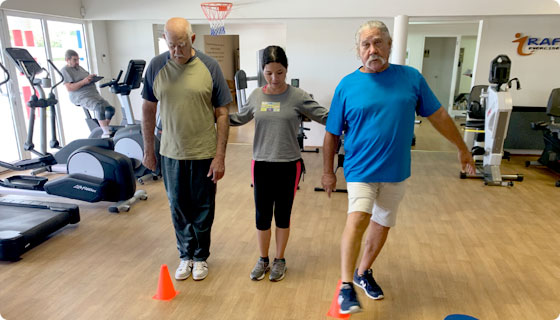Exercise and physical activity for seniors
Adults ages 65 and older gain substantial health benefits from regular physical activity.
- Physical active seniors can perform activities of daily living easier. (Bathing, dressing, getting into or out of a chair or car, moving around in the house, going to the supermarket, being social with your loved ones)
- Physical active seniors are less likely to experience falls and if they fall they less likely to be seriously injured.
- Physical active seniors preserve physical function and mobility – they maintain independent longer and delay the onset of major disability
- There is more and more evidence that physical activity reduces the risk of developing Alzheimer disease and dementia.
Muscle Training
Loss of muscle (atrophy) is a common problem in older adults. Resistance and strength training can benefit bone density, which reduces the risk of osteoporosis and improve balance. In addition, strength training also has the ability to reduce the signs and symptoms of numerous chronic diseases such as heart disease, arthritis, and type 2 diabetes, while also improving sleep and reducing depression.
Regular cardiovascular exercise
Cardio training improves lung capacity and heart function, increases stamina and boosts the immune system.
Fall Prevention
A multitude of things change as you age, not the least of which is muscle tone, eyesight and basic limb strength. These are just a few of the things that can lead to falls in seniors. That makes balance a very important component to staying independent.

